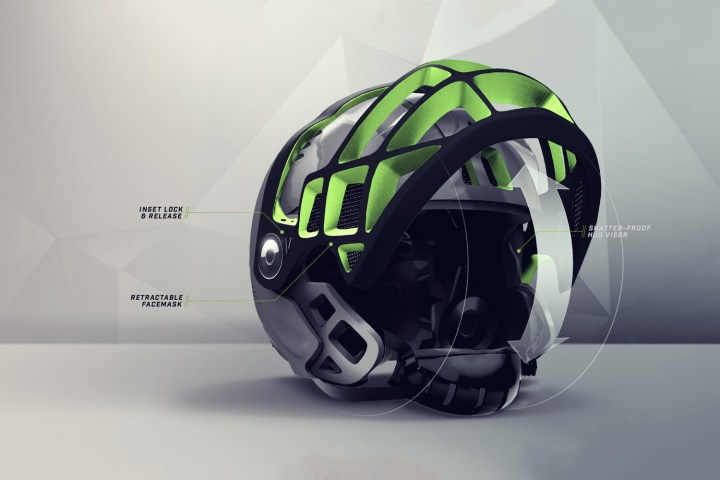
That is where Gridiron Labs, a Los Angeles-based design studio, founded by veteran creative director Dane Storrusten, comes in. Having previously worked with sports franchises and brands in various capacities, he recently headed up a case study showing how helmet manufacturers can step up their game in the next 10 to 15 years.
“The football helmet is one of those iconic, high-opportunity areas that acts as much more than just protective headwear. It’s one of the most prolific brand vehicles in any sport,” Storrusten told Digital Trends. “There are a lot of projects out there addressing only concussion safety — which is absolutely vital to the survival of the game and a topic our case study assumes is priority — but not much innovation around other aspects like usability, branding, or how the helmet becomes the next wearable, connected, device to enhance player and fan experiences.”

For their case study, Storrusten and collaborators looked at everything from new materials like graphene and nanocellulose to the growing ubiquity of small, ultra-tough embedded HD cameras, capable of taking a licking and keeping on ticking. You can read more details of the case study here, which offers up intriguing possibilities like head-up displays to provide information on other players or health stats, smart ventilation systems, impact sensors, and front and rear cameras to capture the game from every direction.
So will these innovations be coming to NFL screens, college football, or even Kickstarter anytime soon? Unfortunately not. There is a reason it’s a study based on football in 2030 — and it’s not because Gridiron Labs is shipping out finished units in the next six months.

“We have a prototype underway just to test out some of the fan experience aspects [such as the] digital display shell and HUD visor, [but] the rest is really just a fun but realistic forecast of what we may be able to expect from helmet manufacturers over the next decade,” Storrusten noted.
One thing is for sure, though: If everything Storrusten predicts comes true, football may get even more exciting and immersive. And hey, if any team owners read this and feel inspired, you know who to contact!


